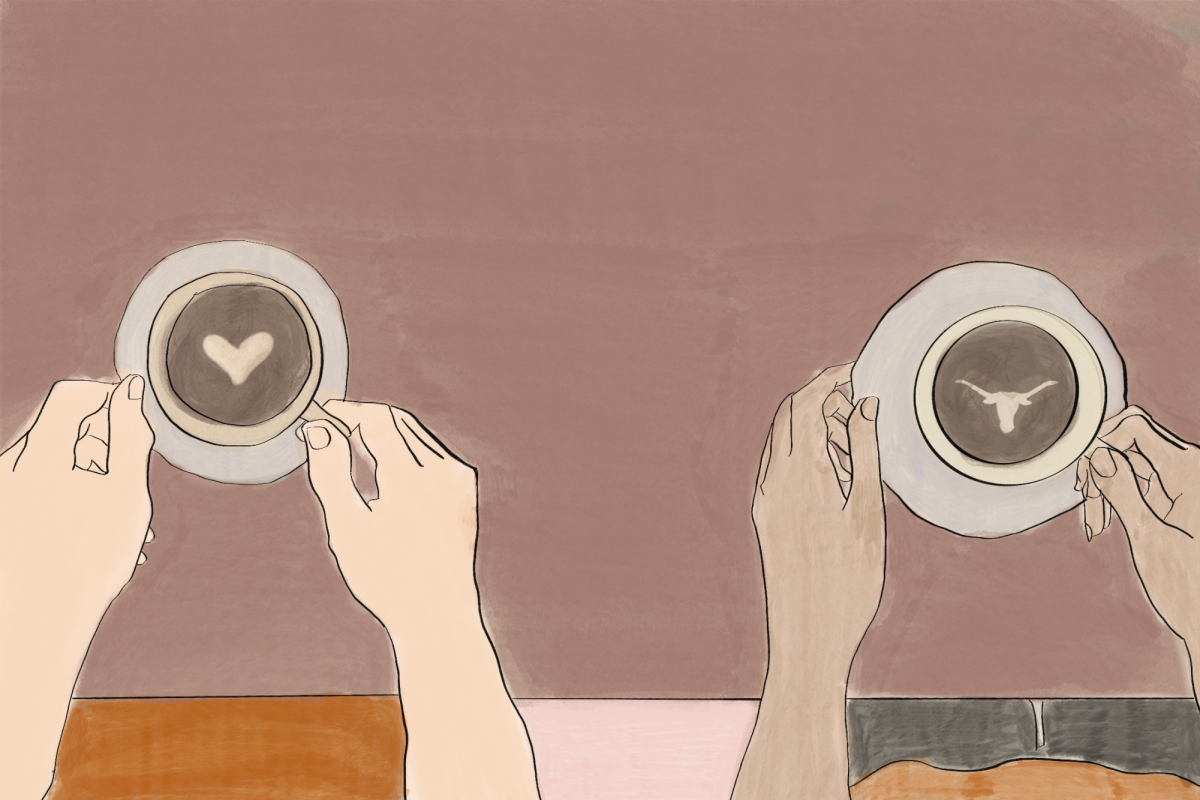In honor of Suicide Prevention Week, the Counseling and Mental Health Center is hosting events each day this week with a common theme: to teach students how to “be that one.” That tagline caused me to wonder, be what one?
What are they asking us to do?
The center reports that 18 percent of undergraduates, or 6,300 students, on the UT campus have seriously considered suicide at some point in their lives. The point of their campaign is to encourage students to “be that one” that talks about mental illness to their friends in need of help.
But I’m not so sure that I agree with their campaign. “Be that one” seems to imply that one person needs to be concerned with suicide prevention and that if it’s just one of us, then it doesn’t have to be you and me. So I read this message as a way to diffuse responsibility: If suicide prevention only needs “one,” then I probably don’t have to be involved.
I feel like this is a typical college student reaction to these types of campaigns. We’ve all heard about what a huge issue suicide is on college campuses, (and I’m not trying to discount it), but it’s sort of hard to imagine what a suicidal person looks like, making it difficult to “be that one” to help them.
So what do we know about suicide? It’s the second leading cause of death for college students, according to CMHC. The National Alliance on Mental Illness reports that 90 percent of people who commit suicide have a diagnosable mental illness. So most likely, if someone commits suicide, then they probably have a mental illness.
The American College Health Association reported in 2009 that 46 percent of college students felt “things were hopeless” at least once in the previous 12 months, and nearly one-third reported feeling so depressed that it was difficult to function. These shockingly high numbers point to the prevalence of mental health issues, and there’s no way that we can claim ignorance to them any longer. Each of us likely knows at least one person who is coping with a mental health issue, even if it’s not a chronic disorder.
But let’s go back further. I’m not sure that I would know what to do if I were struggling with feelings of hopelessness. But it’s not like that for other health problems. For instance, when I have the flu, I know exactly what to do. I know when to get the shot, how to treat myself and when I should see the doctor. I’d tell all my friends that the reason I couldn’t hang out was because I was sick, and I’d probably make a Facebook status about it for good measure, too.
But what if I felt too depressed to function normally? What would that mean? One day in bed? A week in bed? A missed “Thirsty Thursday?” And even if I decided I did need to go to the CMHC for help, I definitely wouldn’t make a Facebook status about it, nor would I feel comfortable sending texts such as “I’m too mentally depressed to function tonight.”
If I had a fever, was throwing up or otherwise felt too sick to go to class, I would automatically send an e-mail to my professor expecting to be excused. But somehow, I can’t imagine sending an e-mail saying I felt too hopeless to go to class. It’s not even the imagined teacher’s response that holds me back but something internal that makes me feel like I couldn’t.
So why do we feel so comfortable talking about physical health problems but not mental ones? It’s not because mental health issues aren’t serious because, along with the risks of suicide, the surgeon general also reports that major depressive disorder is the leading cause of disability in ages between 15 and 44. So what is it?
There is a stigma attached to mental health issues — that somehow, if you admit to having one, you are weaker than the average person or your will isn’t as strong as everyone else’s. Perhaps there’s a fear of being seen as crazy or some distinct “other” that can’t fit in with the rest of the happy people around you. The New York Times reported that Sallie Mae offers tuition refund services to students if they are forced to drop out of school for illness. However, physical illness warrants a 100-percent refund, while mental illness only nets 75 percent back. So we are not the only ones creating some sort of mental health stigma.
So if we are going to make an actual difference in suicide prevention, we need to be much more aware of mental illness. It’s more than a problem that “one” can fix. So let’s not strive to “be that one,” but let’s “be the many” who realize the seriousness of this issue and are able to candidly talk about mental health issues among each other.
Taylor is a Plan II and rhetoric and writing senior.

















